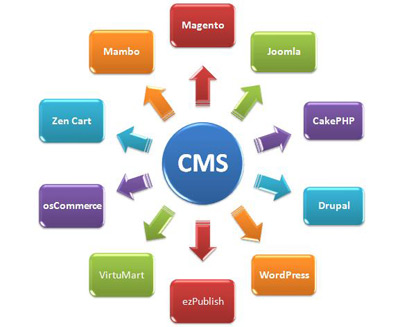Before creating a website, one must know whether to use the Content Management System (CMS) or not. This certainly reduces the workload (for the business and web design firms) while at the same time providing a high-quality production. For those who don’t know, CMS allows content to be published and managed from a server which users can access. This makes life easy for users and developers by allowing trouble-free updating of content without requiring a user know about HTML or PHP. To access content or files, the users no longer must be technological whiz.
Two of CMS’ main features are user and group management that allow the content writers who upload their content to CMS to be more protected. This system also allows users to coordinate a rather dangerous type of data, the versatility. This can however have its benefits and inconveniences. Everything of course comes with a price.
Advantages:
- CMS is a centrally controlled platform from which users can upload their content without learning too many uploading techniques as it would be necessary to build static websites (using HTML and PHP).
- For the IT department, less staff will be required (this tips the balance in favour of companies as it would cut costs. With small-scale enterprises, a whole department of technical experts will not have to be maintained).
- Also, in terms of time, this reduces the updating of data massively. One will need to log in to update the information and the process is user friendly. This form of time saving adds to the efficiency of that firm’s workforce.
- Users control what information should be available to the public and what shouldn’t be. CMS also provides expanded security analysis that involves strategies to safely remove content from regular users of websites.
- Quick development and deployment time: Using a CMS can drastically speed up the process of developing a site;
- Open source CMSs are free to download and install;
- Advanced site functionality: Most systems allow the implementation of functionalities (forms, polls, quizzes, event calendars, etc.) that would otherwise be extremely hard to achieve;
- User-friendly: Gives people with little or no technical skills the ability to create, update or modify content;
- Reduces costs: Implementing an out-of-the-box CMS is less costly than a custom one. Also, after users have learned some of the ins and outs of the CMS, they will be able to handle the basic functions on their own, and this reduces the costs of outside technical assistance as well;
- Easy maintenance and updates: Most CMSs are developed to be easy to maintain and update.
- Huge development communities for open source CMSs
Disadvantages:
- When using CMS however, one needs to operate on a fast processor as CMS dominates the entire RAM space and resources of a computer. This may not allow a user to multitask on a same desktop.
- When using CMS however, one needs to operate on a fast processor as CMS dominates the entire RAM space and resources of a computer. This may not allow a user to multitask on a same desktop.
- Another issue could be that CMS hosting is rather expensive. Web design company’s advice their clients to use a system depending on how frequently their sites need to be updated.
- Hidden implementation costs for perfecting the system for users’ needs
- Server resources: Some CMSs (e.g. Joomla) can put a load on your server resources;
- Some technical skillset requirements: If users have an aversion to learning the basics of using a CMS, the usage of a CMS will not be as efficient. This means that hiring experienced staff or contracting technical help might be necessary
- Maintenance: In the wrong hands, an unmaintained and outdated CMS can do a lot of harm to a website and lead to serious security vulnerabilities
- Direct support: for community-based CMS systems, direct support may not be easy to find, and you must rely on user forums and existing documentation.



